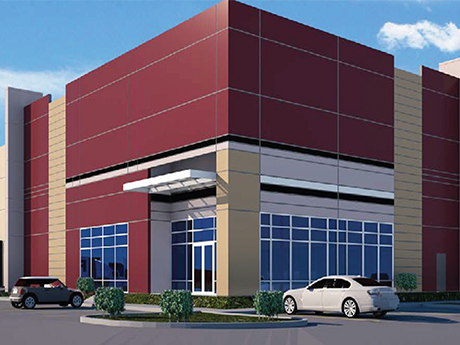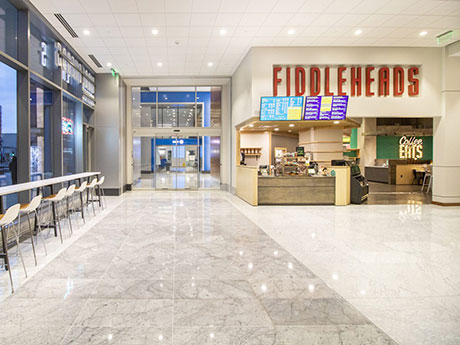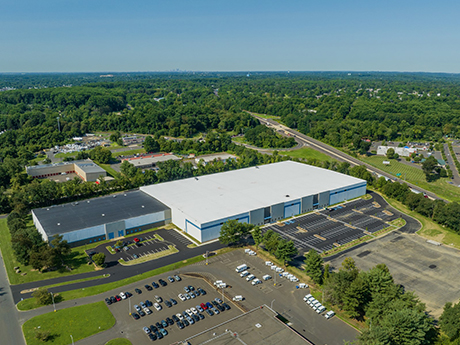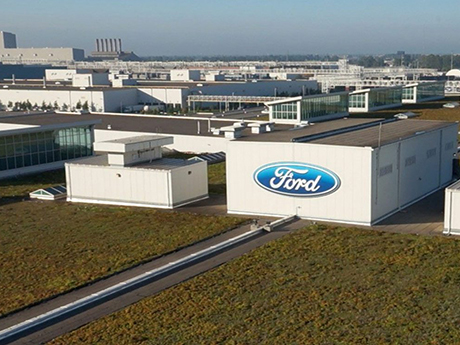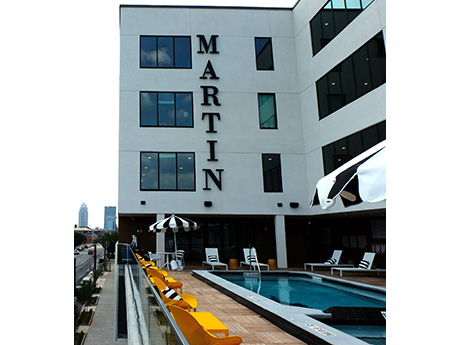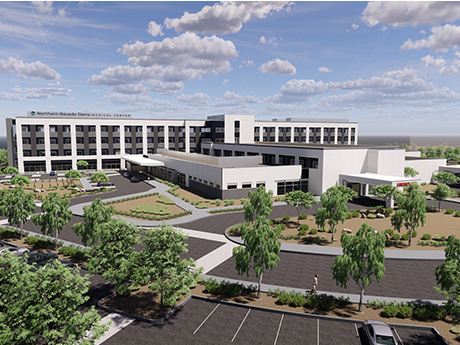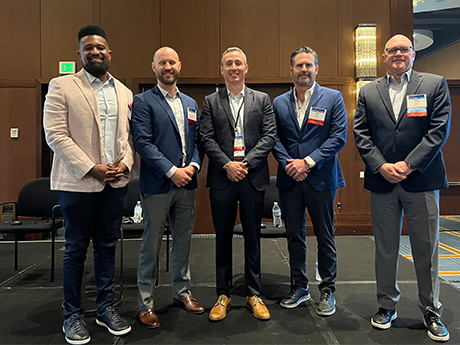— By Nick Knecht, Vice President, DCG Industrial — The industrial real estate market in Northern Nevada demonstrated stability over the first three quarters of 2023. Sales performance year to date through the third quarter was steady, with industrial sales volume reaching $116 million. This represents a 42 percent increase compared to the same period in 2022. This should keep the market on track for a decent year, despite falling slightly short of its historical averages. Notably, the shift in buyer dynamics caused by the rise in interest rates, which have soared as high as 8 percent, has investors sticking to a more conservative approach to their underwriting. Owner-users have emerged as the primary drivers of sale activity, and were the buyers of all four closed sales in September. Prices are beginning to soften, and price reductions are occurring more frequently, which is expected to improve buying opportunities for investors over the next 12 to 18 months. Leasing activity has been concentrated in the 10,000- to 50,000-square-foot range, which captured 44 percent of the third quarter’s lease transactions, and similarly 38 percent in the 5,000- to 10,000-square-foot range. Lease rates have remained relatively stable since the first quarter, with Class A …
Market Reports
By David Pudlosky and Patrick Savoie, JLL Milwaukee remains a strong office market with leasing activity showing no sign of slowing. Post-pandemic, companies took a fresh look at their workplace strategies to adjust to hybrid working environments, and many rightsized their overall square footage while adding significant amenities and attractions that provide a rewarding office experience for returning workers. Despite a smaller footprint, tenants are seeking updated, highly amenitized spaces in Class A buildings. While amenities have always been a focus for landlords, the buildings that stand out today are the ones that focus on quality amenities over quantity. For example, today’s tenant will likely not be as interested in a building lounge unless it has comfortable seating, a café, strong Wi-Fi and more. To be relevant to tenants, amenities must be high end and culture focused. We’ve seen companies like Milwaukee Tool, Fiserv, Komatsu Mining Corp. and Northwestern Mutual invest in their downtown office spaces and make commitments to bring more employees downtown, and we expect this trend to continue. Building owners can learn from what Class A building landlords are doing to drive leasing activity, and learn how investing in quality, amenity-driven spaces will likely bring in new …
By Taylor Williams Architects and general contractors are shaking up the ways in which they design and construct industrial projects in response to financial pressures faced by their clients, an elevated emphasis on sustainability and shifts in how tenants utilize spaces. The nuts and bolts of designing and developing commercial properties are fickle by nature, as they are beholden to consumer preferences, which are in a perpetual state of flux. Yet the current shifts in industrial design and construction practices should not be viewed as indicators of the sector’s waning popularity among investors. “Despite a difficult rate environment that is causing challenges for all sectors of the economy, we have deep optimism about the near- and long-term future for the industrial market in New Jersey and Pennsylvania,” says David Greek, managing partner at regional firm Greek Real Estate Partners. “This region sits amid the most densely populated area in the nation and continues to grow. At the same time, the consumer shift to e-commerce is not nearly complete, creating a dramatic long-term need for logistics facilities to accommodate this historic change.” In other words, industrial is still hot. And the most visible and basic change occurring within the property type — …
Surging Electric Vehicle Construction Drives Momentum in Louisville’s Industrial Market
by John Nelson
With strong industrial leasing activity and significant development over recent years and currently, notably in the electric vehicle (EV) market, Louisville’s industrial real estate market maintains a steady drumbeat and forecasts continued success. The Louisville industrial market’s strong start to the year continued in the second quarter, and the JLL Q2 Industrial Insights report shows that Louisville remains a robust market. Over the past five years, developers constructed over 25 million square feet of Class A industrial space, positively absorbed 27 million square feet and has grown Louisville to a 90 million-square-foot Class A industrial market. Another positive market indicator is rental rates have appreciated 40 percent over the last three years, with the direct average asking rate currently at $5.67 per square foot. We expect this to continue to rise slowly over the next 18 months due to leasing activity, low inventory and a slowdown in speculative development. Louisville is quickly integrating and expanding capacity for EV production, following a growing EV industrial trend across the United States. We expect the EV market to continue expanding, especially with Ford Motor’s commitment to the region and generating an EV presence at the Blue Oval City SK facility. A joint venture …
— By Aiman Noursoultanova, Senior Vice President, CBRE’s Reno Investment Properties Group — Reno’s multifamily sector has performed exceptionally well over the past decade due, in part, to strong, sustained job growth. Nevada continues to lead the nation in employment growth at 3.8 percent over the past year, according to July data from the Bureau of Labor Statistics. While Reno’s job growth over the past decade has focused more on diversification, recent growth can best be characterized by higher-wage industries like healthcare, technology, manufacturing and aerospace/aviation. As a result, the market has seen an influx of new Class A, well-amenitized construction that appeals to this new tenant demographic. Notable company relocations and expansions thus far in 2023 include OMEC Medical, a life sciences instrument manufacturer; Edgecore, a wholesale data center developer, owner and operator; Generac, a leading global designer, manufacturer and provider of energy technology solutions; and Stellar Aviation, a fixed-base private airplane operator catering to private planes and jets. Companies investing in Reno most commonly appreciate the region’s attractive regulatory environment, low cost of doing business, access to regional transportation corridors and a high quality of life for its employees. Regarding rent growth over the past decade, several submarkets have performed …
By Drew Miller, CBRE Despite some level of macroeconomic uncertainty, the fundamentals of the industrial real estate market in West Michigan remain solid. While the overall number of tenants in the market has recently declined slightly, the demand for space from local companies and tenants new to the market is still outpacing supply. Nationally, the overall industrial vacancy rate finished the second quarter of 2023 at 3.7 percent, 30 basis points higher than the previous quarter but 100 basis points lower than the 10-year average. Comparatively, the West Michigan industrial market, of approximately 170 million square feet, ended the second quarter with an availability rate of less than 3 percent. The combination of a diverse economy, robust infrastructure and a conservative approach to development all factor into the continued strength of the region. Grand Rapids, the second-largest city in Michigan, and West Michigan at large are blessed with a well-balanced and diverse economy led by office furniture, automotive suppliers, aerospace, food processing, e-commerce and advanced manufacturing companies. The area is home to many of the leading office furniture and related design companies, including MillerKnoll, Haworth and Steelcase, all headquartered in West Michigan, with many of their manufacturing and suppliers …
By Scott Nurski and Kevin O’Reilly, NAI Wisinski Great Lakes The Grand Rapids multifamily investment sales market has experienced reduced volume year-to-date, but the fundamentals remain strong. West Michigan, especially Grand Rapids, is affordable, with abundant high-paying employment opportunities and a high quality of life. In the words of author Malcolm Gladwell, “I love Grand Rapids. Why doesn’t everyone live in Grand Rapids?” Unlike many major markets, the construction pipeline here is slow and steady, with little risk of oversupply. While multifamily sales volume is down across the board, Grand Rapids remains a desirable location for owners and operators alike. Multifamily fundamentals Annualized rent growth continues to normalize from the wild parabolic rise seen nationwide due to the pandemic and associated market disruptions. It currently stands at 5.1 percent, according to third-quarter data from CoStar for Kent County (30 units and above). This figure is a solid uptick from the second-quarter 2023 figure of 3.2 percent. The market generally is returning to the 3 to 5 percent range typically seen during pre-pandemic norms. Occupancy improved slightly from 95.2 percent in the second quarter of 2023 to 95.4 percent in the third quarter of 2023. However, it has been gradually declining …
Louisville, perhaps the center of the universe for horses and bourbon, is a somewhat undiscovered gem lying at the northern edge of the Southeast. The metro, with a population of just under 1.4 million people, is a steady performer across virtually all measurables, producing consistent and predictable metrics that may not dazzle Wall Street but certainly have not disappointed the base of capital invested in this riverfront market. The Kentucky Derby, which ran for the 149th time this past May, produces $400 million in economic development annually and is likely the first mental image conjured up when the term “Louisville” is mentioned. Kentucky bourbon likely comes to mind next as a $9 billion industry across the state, with roots as deep as oak. However, there’s much more to the Louisville metro. Through the first half of 2023, the Louisville metro area had recovered virtually all of the more than 55,000 jobs the market lost in 2020. Interestingly but not surprisingly, arts, entertainment and recreation posted a net 7.5 percent increase in jobs from 2020 through 2022, more than erasing a blistering 2020 loss of 25.4 percent of the jobs in this sector. Less glamorous but perhaps more critical is transportation …
— By Daniel A. Kapic, Vice President, Regional Manager, Marcus & Millichap — Reno continues to be one of the nation’s fastest-growing smaller markets, underpinning tenant demand in the office sector. While remote and hybrid work have impacted office use in the metro, market-wide vacancies have kept in decent shape. Entering July 2023, Reno’s 15.1 percent vacancy rate was below the pre-2017 average. Rapid household growth has backstopped space needs, with law, financial and health service providers executing expansions to capture share in a growing market. The local household count increased 2.2 percent year over year in September, which was the second fastest among metros with fewer than 600,000 households. South Reno is spearheading this growth with 14 consecutive quarters of positive apartment net absorption through June 2023, drawing consumer-facing office tenants to the highly developed Meadowood neighborhood. The Reno VA Medical Center — which serves patients as far as Alturas, Calif. — recently announced its relocation to the area, which should also elevate long-term needs for nearby medical office space. While household growth has shored up space demand, Reno’s office market is still recalibrating to a 20-year-high supply injection. Overall inventory expanded 2 percent in the first half of …
By Taylor Williams DALLAS — Just 18 months ago, multifamily lenders and investors in major Texas markets were underwriting record-high levels of rent growth to accompany historically low cap rates, giving capital sources little hesitation to lend at negative leverage. Following a spate of nearly a dozen interest rate hikes, the opposite is now mostly true. Negative leverage occurs when a buyer’s going-in capitalization rate is lower than the all-in interest rate on the debt attached to the property. The scenario tends to manifest when a property with an encumbered cash flow is purchased in a high- or rising-interest-rate environment. As a rule of thumb, net operating income should comfortably cover debt service, or at least clearly be moving in that direction at the time of acquisition. When times are good — meaning prices are high for sellers and money is cheap to borrow for buyers — negative leverage can present a flexible and creative way of getting deals across the finish line. Lenders and equity partners may be willing to accept negative leverage in the short run because they are confident that rents/cash flows will soon increase, or that interest rates will remain low, or both. But the ability to …


